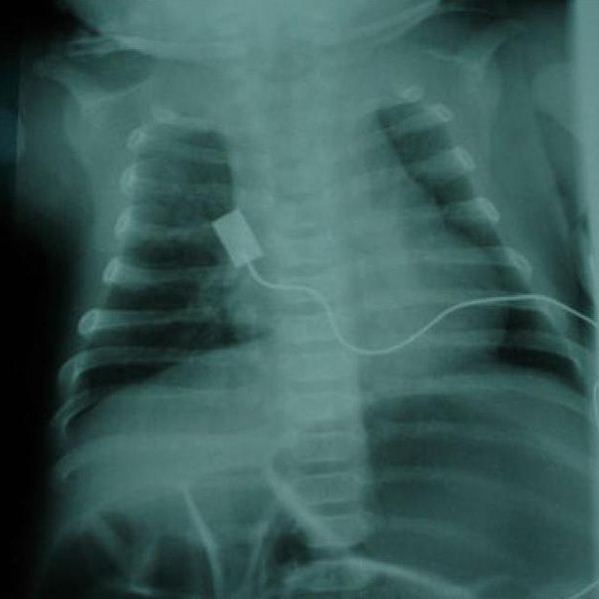Stüve Wiedemann Syndrome (SWS)
Clinical information
Stüve Wiedemann syndrome is a very rare disease that causes skeletal abnormalities (particularly bowing of the long bones and hip abnormalities). Surgeries are often necessary to correct skeletal deformities. Patients also have camptodacytly (permanently bent fingers) and often have respiratory difficulties. Many patients with SWS do not survive more than a few months. In those that do, however, respiratory problems improve, as does prognosis (1).
A variety of musculoskeletal problems occur in SWS. They include the following:
- Short stature, due in part to bowing of the long bones
- Osteoporosis
- Fractures
- Clubfoot or feet
- Spinal curvature abnormalities (scoliosis, kyphosis, or both)
- Abnormally wide metaphyses (area near the end of a long bone; see photo below)
Musculoskeletal problems
SWS patients may also have decreased sensitivity to pain, feeding difficulties (including difficulty swallowing), psychomotor delays, and frequent infections. Corneal reflexes are absent in a majority of patients. They may also experience dysautonomia (malfunction of the autonomic nervous system), including excessive sweating.
SWS patients have similar facial characteristics, including the following:
- Low-set ears
- Squared jaw
- Small jaw
- Puckered chin
- Pursed lips
- Short neck
- Smooth tongue
- Malocclusion (crooked teeth)
Facial characteristics
Hyperthermia (high body temperature) is an important problem that occurs in SWS patients. Temperatures of 41°C (106°F) have been reported (2), but given that fever episodes can be fatal (2), they may go higher.
Another disorder, Schwartz-Jampel syndrome, type 2, was once thought to be a different disease from SWS. However, today, many researchers consider them to be the same disease. This is because they are clinically indistiguishable. In addition, patients labeled as having Schwartz-Jampel syndrome, type 2 were found to have mutations in the gene that causes SWS (3).
In making a diagnosis, SWS should be distinguished from Crisponi syndrome (also known as cold-induced sweating syndrome). These two conditions look very similar. In particular, both share hyperthermia, camptodactyly and other contractures, and spasms/contractions of facial muscles. However, Crisponi syndrome patients do not appear to have bowing of the long bones. See our Crisponi syndrome page for references and more information. Other diseases that resemble SWS include Schwartz-Jampel Syndrome (type 1), campomelic dysplasia, Freeman-Sheldon syndrome, King syndrome, Marden-Walker syndrome, Morquio syndrome/mucopolysaccharidosis IV, and Van Dyke-Hanson syndrome.
Clincians and others may wish to read a short review on SWS written by the National Organization for Rare Disorders (NORD); see the General Information section at the right.
SWS is an autosomal recessive disease that can be confirmed by testing for mutations in the gene LIFR1. The link in the Testing section at the right has a list of labs that test for mutations in this gene.
References
- 1. Mikelonis D et al. (2014) Stüve-Wiedemann syndrome: LIFR and associated cytokines in clinical course and etiology. Orphanet J Rare Dis 9:34. Full text on PubMed.
- 2. Wiedemann HR & Stüve A (1996) Stuve-Wiedemann Syndrome: update and historical footnote. Am J Med Gen 63(1):12-16. Abstract on PubMed.
- 3. Al-Gazali LI et al. (1996) Neonatal Schwartz-Jampel syndrome: a common autosomal recessive syndrome in the United Arab Emirates. J Med Genet 33(3):203-211. Full text on PubMed.
- 4. Al Kaissi A et al. (2008) Congenital contractures and distinctive phenotypic features consistent with Stuve-Wiedmann syndrome in a male infant. Cases J 1(1):121. Full text on PubMed.



